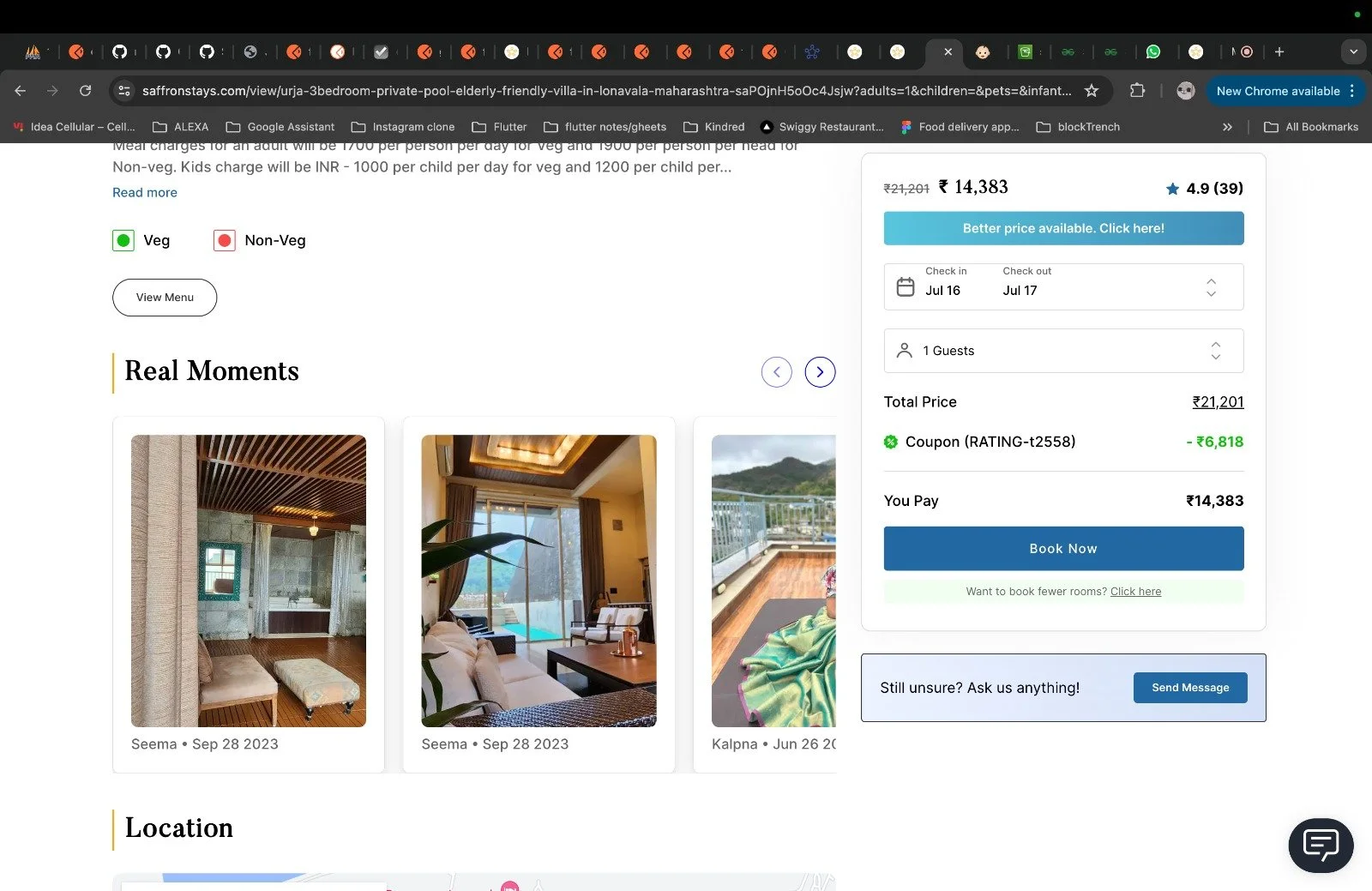SaffronStays 3.0
Product Manager -> 0 - 1
After addressing numerous issues within the company, I turned my attention to our most critical challenge: our website. As the primary face of our brand, our PHP-based site was plagued with problems. Its archaic structure and complex code led to frequent crashes, severely impacting our online presence. The stark reality was that it only contributed to 5% of our total sales, with the lion's share coming from Online Travel Agencies (OTAs) like booking.com. This not only meant high commission costs but also low brand retention. However, overhauling the website posed a significant risk of downtime, a luxury we couldn't afford in our competitive market.
The Plan
To tackle this challenge, we embarked on a comprehensive research and analysis phase. We dove deep into user sessions, meticulously examining clicks, user behavior, and navigation patterns. Our goal was to understand what motivated purchases and what caused frustration. We paid special attention to areas with high rage clicks, identifying pain points in the user journey.
Recognizing the need for a fresh, modern design, we drew inspiration from industry leaders like Airbnb. We studied their user flows and best practices, incorporating these insights into our new design. Within a couple of months, we had completed 90% of the design work.
Simultaneously, we focused on developing robust APIs. This crucial step involved carefully transferring every function from the old PHP code to ensure no feature or functionality was lost. We understood that any oversight could directly impact our revenue, so we invested significant time in writing, building, and rigorously testing these APIs. This process was iterative, with continuous discovery and resolution of edge cases.
Our primary objectives were to optimize for speed, clarity, and responsiveness, especially considering that most of our traffic came from mobile devices. We also strategically focused on elements that would drive purchases, implementing several quick wins along the way.
The Quick Wins
Humanizing Reviews: We enhanced our review system by allowing users to add pictures, significantly boosting credibility. We incentivized this feature with reward points, creating a win-win situation that increased bookings from both reviewers and potential customers.
Prominent Coupon Display: We made coupons more accessible and visible. The system now automatically applied relevant coupons before users hit the "book now" button. We also implemented educational nudges about available coupons, a move that was appreciated for its transparency and led to increased bookings.
Speed Optimization: Addressing a major user frustration point, we built new APIs using Node.js and GoLang. This significantly improved the speed and smoothness of the booking process, reducing user drop-offs due to slow loading times.
End Result
The impact of SaffronStays 3.0 was immediate and substantial. In just the first two months post-launch, our direct booking share skyrocketed to 20%, a figure that has continued to grow steadily. This shift has given us greater control over our customer relationships, reduced our dependency on OTAs, and consequently lowered our commission fees. We've also observed an increase in repeat customers, a key indicator of improved brand loyalty and user satisfaction.
Perhaps most importantly, these improvements played a crucial role in achieving profitability within a year of the new website's launch. This transformation not only enhanced our online presence but also significantly strengthened our financial position in the competitive luxury hospitality market.





